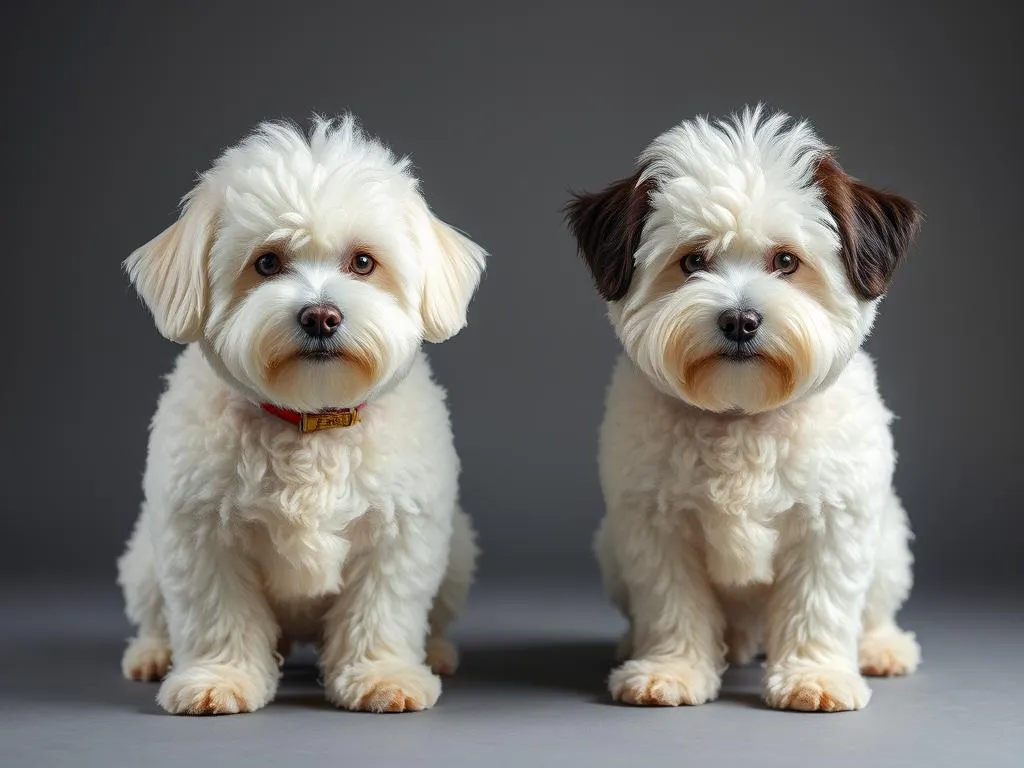
Introduction
In recent years, small dog breeds have gained immense popularity among pet lovers. Their manageable size, affectionate nature, and adaptability to various living situations make them ideal companions for many families. Among these beloved breeds are the Bichon Frise and Havanese—two adorable, fluffy companions that often capture the hearts of dog enthusiasts. Understanding the differences and similarities between these two breeds is crucial for potential dog owners. This article delves into a detailed comparison of the Bichon Frise vs Havanese, helping you make an informed decision about which breed might be the perfect fit for your home.
Breed Overview
Bichon Frise
History and Origin
The Bichon Frise has its roots in the Mediterranean region, where it was developed as a companion dog. This breed is part of the Bichon family, which includes several small dog breeds known for their cheerful disposition. Historically, the Bichon Frise has been a favorite among aristocrats and has played a significant role as a companion throughout various periods, including the Renaissance.
Physical Characteristics
The Bichon Frise typically weighs between 10 to 20 pounds and stands about 9 to 11 inches tall. One of its most distinctive features is its soft, curly coat, which is often white but can also come in shades of cream or apricot. Their coat requires regular grooming to prevent matting and to maintain its fluffy appearance.
Temperament
The Bichon Frise is known for its lively and affectionate personality. They are friendly, playful, and tend to get along well with children and other pets. Their cheerful demeanor makes them excellent companions for families, and their intelligence allows them to pick up on training commands relatively quickly.
Havanese
History and Origin
The Havanese has a rich history that traces back to Cuba, where it was developed from the Bichon family. These dogs were cherished by Cuban aristocrats and became known for their friendly and sociable nature. The breed’s name is derived from the capital city of Havana, where they were often seen as lap dogs and companions.
Physical Characteristics
Havanese dogs typically weigh between 7 to 13 pounds and stand about 8.5 to 11.5 inches tall. They have a long, silky coat that can be found in various colors, including black, white, cream, chocolate, and even tricolor. Their coat also requires consistent grooming, as it can easily become tangled if not properly maintained.
Temperament
The Havanese is known for its playful and affectionate temperament. They are intelligent and eager to please, making them highly trainable. This breed is especially good with children and other pets, demonstrating a social nature that makes them a wonderful addition to any family.
Comparison of Bichon Frise and Havanese
Size and Weight
When comparing the sizes of the Bichon Frise and Havanese, both breeds fall within the small dog category. However, the Bichon Frise is generally slightly larger, weighing between 10 to 20 pounds compared to the Havanese’s range of 7 to 13 pounds. Both breeds share a compact structure, but the Havanese may appear slightly more delicate due to its lighter build.
Coat and Grooming Needs
The grooming needs of the Bichon Frise and Havanese are quite similar, yet there are some distinctions. The Bichon Frise has a curly coat that is prone to matting, requiring regular brushing at least three times a week and professional grooming every month. On the other hand, the Havanese boasts a long, silky coat that also demands regular maintenance, including brushing several times a week to prevent tangling.
In terms of shedding, both breeds are considered hypoallergenic, making them suitable for allergy sufferers. However, it’s essential to note that no dog is entirely hypoallergenic; individual reactions may vary.
Temperament and Personality
Both the Bichon Frise and Havanese exhibit friendly and affectionate temperaments. They are playful, energetic, and enjoy spending time with their families. However, some subtle differences exist:
-
Energy Levels: The Bichon Frise tends to have slightly higher energy levels, requiring regular playtime and exercise to keep them content. In contrast, the Havanese is also active but can adapt well to a more relaxed lifestyle.
-
Affection Levels: Both breeds are affectionate, but the Havanese might display a slightly more laid-back demeanor, often enjoying cuddling sessions and quiet moments with their owners.
-
Social Behavior: While both breeds are generally sociable, the Havanese may be more inclined to bond closely with its family and be somewhat reserved around strangers. The Bichon Frise, on the other hand, is often eager to meet new people.
Health Considerations
When considering the health aspects of the Bichon Frise and Havanese, both breeds are generally healthy but are prone to specific conditions:
-
Bichon Frise: Common health issues include skin allergies, dental problems, and patellar luxation. Regular veterinary check-ups and a balanced diet can help mitigate these risks.
-
Havanese: This breed may face health concerns such as hip dysplasia, eye disorders, and heart issues. Like the Bichon, maintaining a healthy lifestyle and routine veterinary care is crucial for their well-being.
Both breeds have a lifespan ranging from 12 to 16 years, depending on genetics and overall care.
Training and Socialization
Trainability
Both the Bichon Frise and Havanese are known for their intelligence and eagerness to learn, making them relatively easy to train. However, training approaches may differ slightly:
-
The Bichon Frise responds well to positive reinforcement techniques, such as treats and praise. They are quick learners but can also be a bit stubborn at times, requiring patience during training sessions.
-
Havanese dogs are similarly trainable and thrive on positive reinforcement. They often enjoy learning tricks and commands, making training a fun and engaging experience for both owner and dog.
Socialization Needs
Early socialization is essential for both breeds to ensure they grow into well-adjusted adults. Exposing them to various environments, people, and other pets helps prevent behavioral issues.
- The Havanese may require a bit more socialization to feel comfortable around unfamiliar people, while the Bichon Frise typically embraces new experiences more readily.
Encouraging positive interactions with other animals and people is vital for both breeds to develop their friendly and sociable nature.
Lifestyle Considerations
Living Environment
Both the Bichon Frise and Havanese are adaptable and can thrive in a variety of living environments. They are well-suited for apartment living due to their small size, though they do require regular exercise and playtime.
-
The Bichon Frise may need more space to expend energy, so regular walks and playtime in a yard or park can be beneficial.
-
The Havanese can be happy in smaller spaces but still enjoy outdoor play and walks.
Family Compatibility
Both breeds are excellent companions for families, but their compatibility may vary based on family dynamics:
-
The Bichon Frise is playful and energetic, making it a great choice for active families who can provide ample playtime and interaction.
-
The Havanese is equally affectionate and friendly, often thriving in households with children and other pets. Their gentle nature makes them suitable for families who may have younger children.
Cost of Ownership
When considering the costs associated with owning a dog, both the Bichon Frise and Havanese have similar financial requirements.
-
Initial Costs: Both breeds typically range from $500 to $2,500, depending on factors like pedigree and breeder reputation.
-
Ongoing Costs: Regular expenses for food, grooming, and veterinary care should be anticipated. Monthly food costs can range from $30 to $60, while grooming might cost between $50 to $100 per visit, depending on the services required.
Conclusion
In summary, both the Bichon Frise and Havanese are charming small dog breeds that bring joy and companionship to their owners. While they share many similarities in temperament and care requirements, there are distinct differences in size, grooming needs, and personality traits.
When choosing between the two breeds, consider your lifestyle, living environment, and family dynamics. Whether you opt for the lively Bichon Frise or the affectionate Havanese, both breeds will undoubtedly enrich your life with their love and companionship. Remember to consider adoption from shelters or breed-specific rescues to give a loving home to a dog in need.
FAQs
What are the main differences in grooming needs between Bichon Frise and Havanese?
The Bichon Frise has a curly coat that requires regular grooming to prevent matting, while the Havanese has a long, silky coat that also needs consistent brushing to avoid tangles. Both breeds are low-shedding and hypoallergenic.
Are Bichon Frise and Havanese good with children?
Yes, both breeds are known for their friendly and gentle nature, making them excellent companions for families with children. However, supervision during playtime is always recommended.
How long do Bichon Frise and Havanese usually live?
Both breeds have a lifespan of approximately 12 to 16 years, depending on their health and care. Regular veterinary visits and a healthy lifestyle can help extend their lives.
Do Bichon Frise and Havanese have similar exercise needs?
While both breeds enjoy playtime and daily walks, the Bichon Frise may require slightly more exercise due to its higher energy levels. The Havanese is also active but can adapt to a more relaxed lifestyle.
Can Bichon Frise and Havanese live in apartments?
Yes, both breeds are well-suited for apartment living due to their small size. However, they still need regular exercise and mental stimulation to stay happy and healthy.









